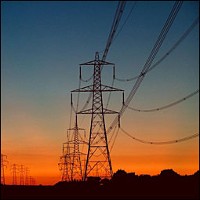Computer scientists and engineers at North Carolina State University in Raleigh developed a computer model to aid energy-related economic policy decisions, making both their data and source code available to the public. The model, called Tools for Energy Model Optimization and Assessment or Temoa, is the work of a team led by NC State engineering professor Joseph DeCarolis, and described yesterday online in the journal Energy Economics. (While the model may be open-source, the article requires a paid registration.)
DeCarolis and colleagues aim to improve the transparency and verifiability of decision models for policy decisions involving energy, which can have impacts measured in billions of dollars. These models address questions such as policies for driving down energy costs or reducing greenhouse gas emissions.
“Most models show you the math behind how they work, but don’t share the source code that is supposed to implement that math,” says DeCarolis in a university statement, “so you can’t tell how faithful the model is to the mathematics.” He adds that the problem is compounded by lack of data sharing by users of existing models, making it difficult to check their work.
The Temoa model, say the researchers, is a network of linked processes that convert raw energy commodities — e.g., coal, uranium, or biomass — through a set of intermediate energy products — e.g., electricity or gasoline — into an end-use in demand, such as transportation or heated water. Each technology in the model is defined in terms of engineering, economic, and environmental factors.
The NC State team says the model is similar to the MARKAL energy-economic optimation model developed and maintained by the Energy Technology Systems Analysis Programme of the International Energy Agency. Like MARKAL, Temoa takes a defined set of demands, technologies, and constraints, then identifies the strategy that minimizes total energy system costs.
In the journal paper, DeCarolis and colleagues verify the Temoa model by running a simple test exercise in both Temoa and MARKAL. In addition, say the researchers, Temoa is designed to be more rigorous in analyzing policy outcomes under conditions of uncertainty, which they also tested and reported on in the paper.
The Temoa model is written in Pyomo, an open-source modeling package that runs under the Python programming language, also open-source. The model, say its developers, works on Windows, Mac, and Linux systems.
Read more:
- Hydrogen Fuel Cells Found Feasible for Ships Docked in Port
- Study: Solar Panel Industry Now a Net Energy Producer
- Industry Technology Formulas Given Real-World Tests
- R&D Project Aims To Cut Time, Cost of Solar Installations
- Study: Insurance Industry Adjusting to Climate Change
* * *


 RSS - Posts
RSS - Posts
You must be logged in to post a comment.